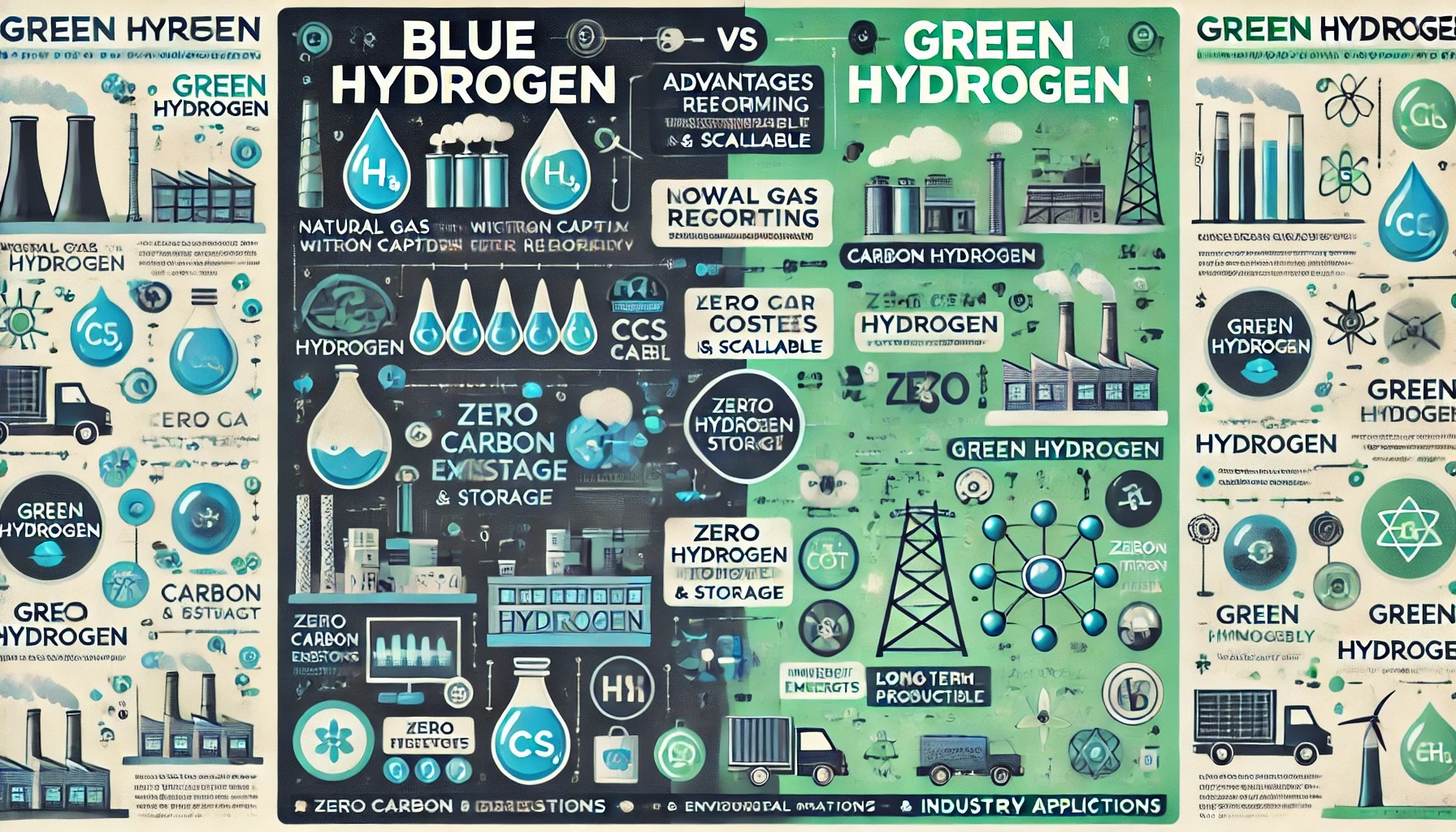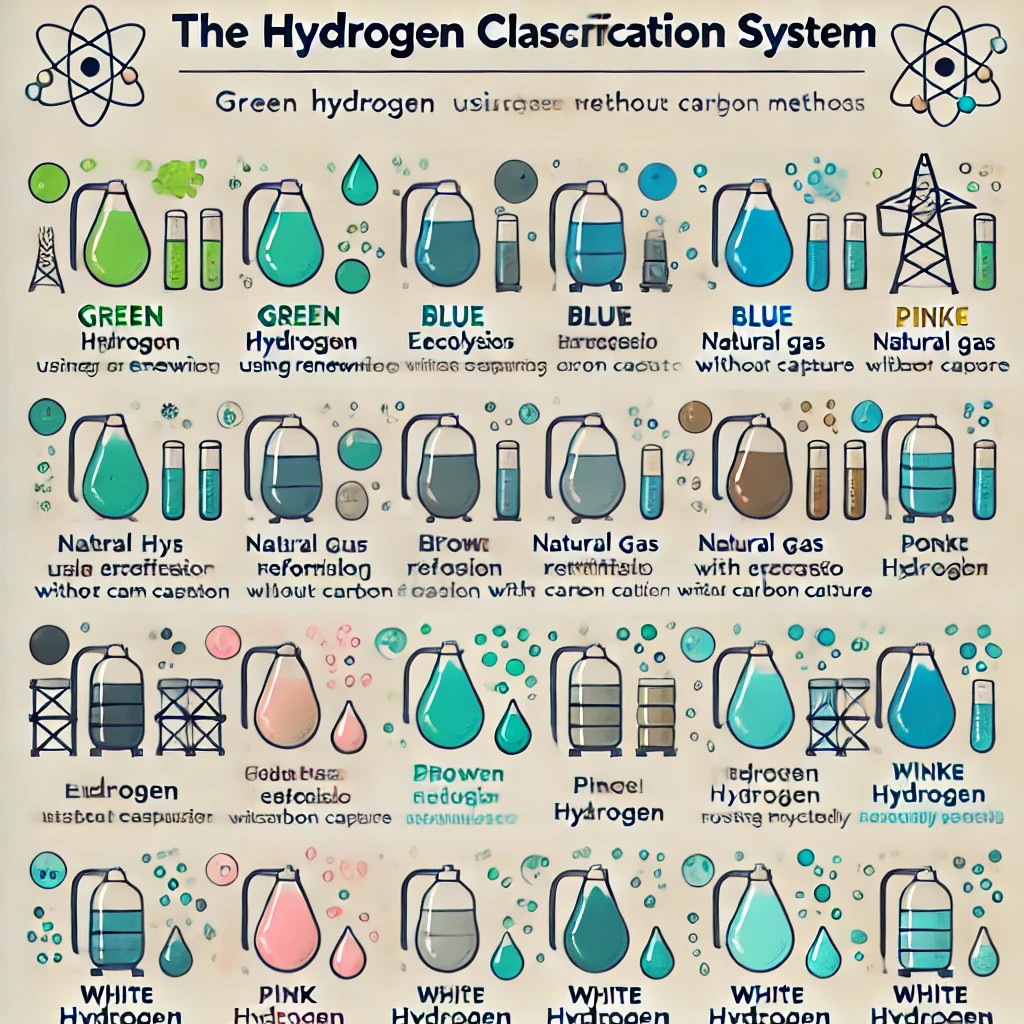Imagine a world where the fuel that powers our cars, industries, and homes is created from nothing more than water and sunlight, leaving behind no pollution—only pure oxygen. This isn’t science fiction; it’s the promise of green hydrogen, a game-changer in the global shift toward clean energy.
Green hydrogen has emerged as a beacon of hope in the fight against climate change, offering a zero-carbon alternative to traditional fossil fuels. Unlike gray hydrogen, which relies on natural gas and emits significant carbon dioxide, green hydrogen is produced using renewable energy sources, making it an essential piece in the puzzle of a sustainable energy future.
At the heart of this transformation lies electrolysis technology—a process that splits water into its basic components, hydrogen and oxygen, using electricity. But not just any electricity will do; the power must come from renewable sources like wind, solar, or hydro to truly label the hydrogen as “green.” Understanding this process is key to grasping why green hydrogen is hailed as a cornerstone of the energy transition.
This article dives deep into the fascinating world of electrolysis technology. We’ll explore how it works, the various types of electrolyzers, their advantages and challenges, and the innovations shaping the future of green hydrogen production. By the end, you’ll have a clear picture of why this clean energy technology is poised to revolutionize the way we power our lives.
What is Green Hydrogen?
Green hydrogen is a transformative energy carrier, produced by harnessing renewable energy to split water molecules into hydrogen and oxygen. Unlike its counterparts—gray, blue, and pink hydrogen—green hydrogen’s production is entirely free of greenhouse gas emissions, making it a pillar of the clean energy transition.
To better understand its significance, it’s helpful to compare the various types of hydrogen:
- Gray hydrogen, responsible for the majority of global hydrogen production, is derived from natural gas or coal through processes like steam methane reforming. However, it releases significant amounts of carbon dioxide, contributing to climate change.
- Blue hydrogen utilizes the same production methods as gray hydrogen but incorporates carbon capture and storage (CCS) to trap and store emissions. While cleaner than gray hydrogen, the process is not entirely emission-free and depends on CCS infrastructure.
- Pink hydrogen employs nuclear power to drive the electrolysis process, offering a low-emission alternative but raising concerns about nuclear waste and safety.
Green hydrogen, on the other hand, is a true zero-emission solution. By leveraging renewable energy sources like solar, wind, or hydropower, it ensures that the entire production cycle remains environmentally friendly. This makes it an ideal choice for decarbonizing hard-to-abate sectors like heavy industry, aviation, and shipping.
The Basics of Electrolysis
Electrolysis is the fundamental technology underpinning green hydrogen production. It involves passing an electric current through water, causing it to dissociate into hydrogen gas and oxygen. This simple yet powerful process happens inside an electrolyzer, which contains electrodes and a medium to facilitate ion movement. The core reaction is as follows:
2H2O(l)→2H2(g)+O2(g)2H₂O (l)
2H₂ (g) + O₂ (g)2H2O(l)→2H2(g)+O2(g)
The hydrogen produced is then collected and can be stored, transported, or used directly in applications such as fuel cells, industrial processes, or power generation. The key to ensuring this process is sustainable lies in the electricity source. When powered by renewable energy, the process becomes entirely green, with no emissions released into the atmosphere.
Types of Electrolysis Technologies
Three main electrolyzer technologies dominate the green hydrogen landscape, each with its unique characteristics and applications:
- Alkaline Electrolysis (AEL):
- How it works: AEL systems use a liquid alkaline electrolyte, such as potassium hydroxide, to conduct ions between electrodes.
- Applications: Well-suited for large-scale hydrogen production where cost-effectiveness is key.
- Advantages: Mature technology, relatively low cost, and long operational lifespans.
- Challenges: Limited efficiency and slower response times, which can be problematic in dynamic renewable energy systems.
- Proton Exchange Membrane (PEM) Electrolysis:
- How it works: PEM electrolyzers use a solid polymer electrolyte to facilitate proton exchange, offering compact and efficient operation.
- Applications: Ideal for renewable energy integration and applications requiring flexible output.
- Advantages: High efficiency, quick response to fluctuating power inputs, and compact design.
- Challenges: High costs due to reliance on rare materials like platinum and iridium, which also raise concerns about supply chain sustainability.
- Solid Oxide Electrolysis (SOEC):
- How it works: SOEC operates at high temperatures, typically between 700°C and 1,000°C, leveraging thermal energy to enhance efficiency.
- Applications: Best suited for industrial processes where waste heat can be reused, such as steelmaking or chemical production.
- Advantages: High efficiency and the ability to utilize both electricity and heat.
- Challenges: Still in early development stages, with challenges around durability, material costs, and system complexity.
Advantages of Electrolysis for Green Hydrogen Production
Electrolysis powered by renewables offers unparalleled benefits for clean energy systems:
- Zero-Carbon Footprint: When fueled by renewable electricity, the process emits no carbon dioxide, aligning with global decarbonization goals.
- Scalability: Electrolyzers can be scaled to fit a variety of applications, from small renewable energy projects to large industrial operations.
- Energy Storage: Green hydrogen acts as a versatile energy carrier, storing excess renewable electricity and providing stability to grids during periods of low renewable generation.
Challenges and Barriers
Despite its potential, green hydrogen production faces notable challenges:
- High Costs: Electrolyzers are expensive, and renewable electricity costs can be prohibitive in regions with limited renewable capacity.
- Efficiency Losses: Electrolysis is not 100% efficient, and energy losses occur during conversion and storage.
- Infrastructure Requirements: The lack of hydrogen pipelines, storage facilities, and fueling stations hampers deployment.
- Material Constraints: Technologies like PEM and SOEC rely on rare and costly materials, which may limit large-scale adoption.
Future Innovations and Trends
Innovation is paving the way for more cost-effective and efficient green hydrogen solutions:
- Advanced Electrolyzers: Emerging technologies, such as anion exchange membrane (AEM) electrolysis, promise to combine the efficiency of PEM with the cost-effectiveness of AEL.
- Mass Production: Scaling up manufacturing of electrolyzers could significantly reduce costs.
- Renewable Integration: Co-locating electrolyzers with large-scale wind and solar projects can optimize resource utilization and reduce transmission losses.
Real-World Applications and Case Studies
Green hydrogen is already making an impact globally. For example:
- Europe: Initiatives like the European Hydrogen Backbone aim to create a transcontinental hydrogen network.
- Australia: Renewable hydrogen hubs are being developed to produce and export green hydrogen to energy-hungry markets.
- Heavy Industry: Companies like Thyssenkrupp and ArcelorMittal are piloting hydrogen-based steelmaking processes.
Conclusion
Electrolysis technology represents a breakthrough in producing clean, sustainable hydrogen. As the global energy landscape shifts, green hydrogen has the potential to decarbonize industries, enable energy storage, and create a more resilient energy system. Addressing current challenges through innovation, investment, and collaboration is essential to realizing its full potential. The time to act is now—green hydrogen is the key to unlocking a zero-carbon future.
Frequently Asked Questions (FAQs)
1. What is green hydrogen, and how is it different from other types of hydrogen?
Green hydrogen is produced by using renewable energy to split water into hydrogen and oxygen through electrolysis. Unlike gray hydrogen (produced from fossil fuels) or blue hydrogen (which involves carbon capture), green hydrogen is entirely carbon-free and sustainable, as it relies solely on renewable energy sources like wind, solar, or hydropower.
2. Why is green hydrogen considered important for the energy transition?
Green hydrogen plays a critical role in decarbonizing sectors that are difficult to electrify, such as heavy industry, aviation, and shipping. It also serves as a storage medium for excess renewable energy, helping balance energy grids and enabling a more resilient, low-carbon energy system.
3. What are the main technologies used in green hydrogen production?
The primary technologies are:
- Alkaline Electrolysis (AEL): A mature and cost-effective method suitable for large-scale hydrogen production.
- Proton Exchange Membrane (PEM) Electrolysis: Efficient and responsive but more expensive due to the use of rare materials.
- Solid Oxide Electrolysis (SOEC): Operates at high temperatures, offering high efficiency but still in the experimental stages.
4. What are the biggest challenges in producing green hydrogen?
The key challenges include:
- High costs of electrolyzers and renewable electricity.
- Efficiency losses during production and storage.
- Limited infrastructure for hydrogen storage, transport, and distribution.
- Dependency on rare materials for some technologies, which can hinder scalability.
5. How efficient is the electrolysis process?
Current electrolysis technologies typically achieve efficiencies of 60-80%. However, losses occur during the conversion and storage phases. Research and development are ongoing to improve these efficiencies and reduce costs.
6. Can green hydrogen replace fossil fuels completely?
While green hydrogen is not a universal solution, it is highly effective in decarbonizing specific sectors where direct electrification is challenging. Combined with other renewable energy technologies, it can significantly reduce reliance on fossil fuels.
7. What is the environmental impact of green hydrogen production?
Green hydrogen production has minimal environmental impact as it uses renewable energy and water. The only byproduct is oxygen, making it a clean and sustainable process. However, the process requires careful management of water resources in regions where water scarcity is an issue.
8. How much renewable energy is required to produce green hydrogen?
Producing 1 kilogram of green hydrogen typically requires about 50 kWh of electricity. This means a significant amount of renewable energy is needed for large-scale hydrogen production, highlighting the importance of scaling up renewable energy capacity globally.
9. Are there any safety concerns with using and storing hydrogen?
Hydrogen is flammable, and safety measures are necessary for its production, storage, and transport. However, with proper technology and protocols, hydrogen can be managed as safely as other fuels like natural gas.
10. What are some current uses of green hydrogen?
Green hydrogen is used in:
- Heavy Industry: Replacing coal and natural gas in steel production.
- Transportation: Powering fuel cell electric vehicles (FCEVs) for buses, trucks, and trains.
- Energy Storage: Storing excess renewable energy for later use.
- Chemical Production: As a feedstock for ammonia and methanol production.
11. What are governments doing to support green hydrogen?
Many governments are introducing policies, subsidies, and infrastructure investments to support green hydrogen. Examples include the European Union’s Hydrogen Strategy, Australia’s Renewable Hydrogen Hub initiatives, and U.S. incentives under the Inflation Reduction Act.
12. What does the future hold for green hydrogen?
The future of green hydrogen is promising, with advances in electrolyzer technology, declining costs of renewable energy, and increasing global commitments to decarbonization. As infrastructure develops and innovations emerge, green hydrogen is expected to play a central role in achieving a zero-carbon economy.


